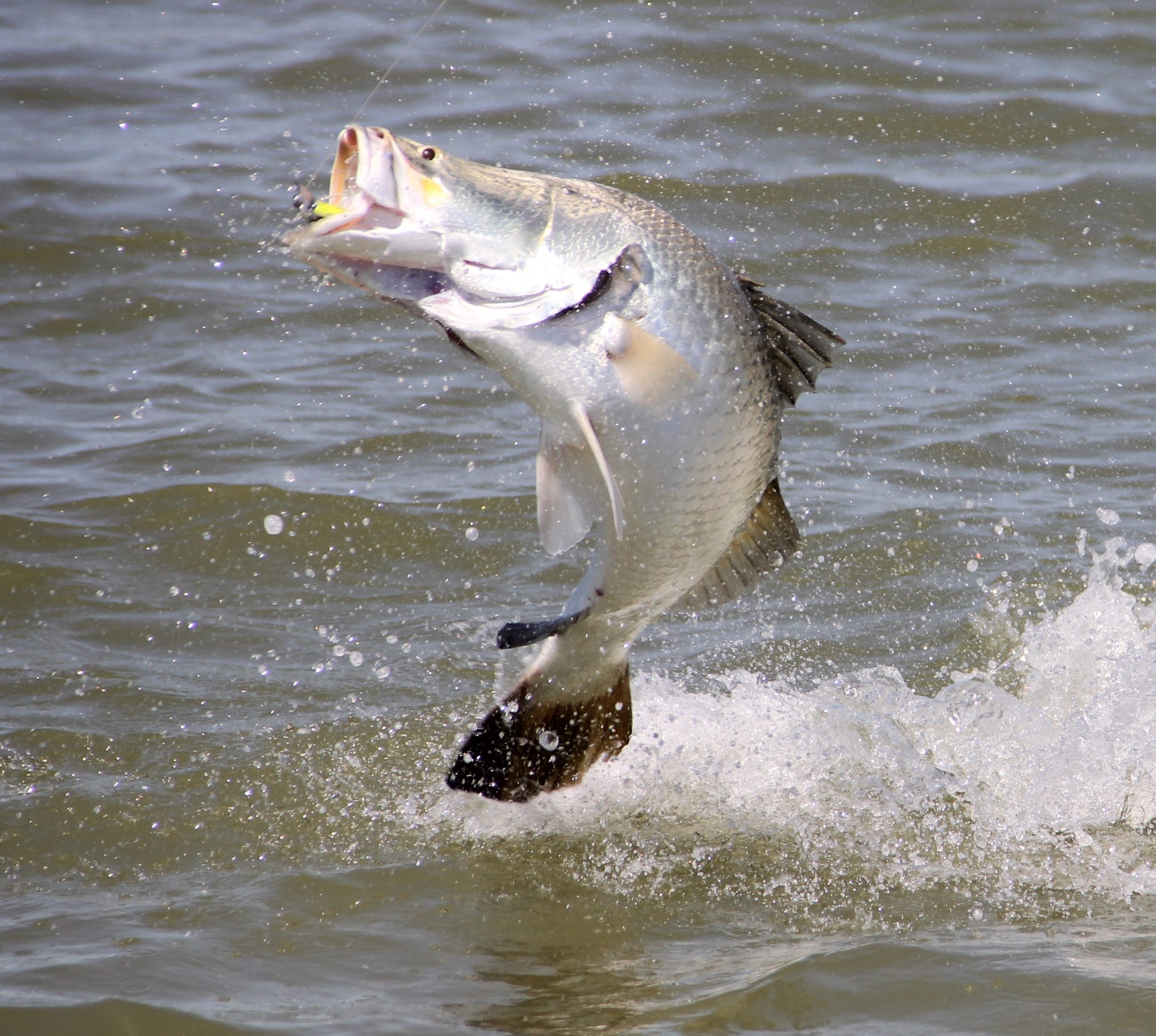How well do you reckon you know your barra? We caught up with our mates at Fisheries NT who taught us a thing or two about their lifecycles!
In the traditional barramundi lifecycle, sexually mature females hang around the entrances of rivers and estuaries to spawn. From there, larvae move into swamps and mangroves where they remain for several months before they move into the freshwater rivers, floodplains and billabongs. It’s not until they’re ready to spawn as males that they return to the salt water, and eventually change sex to female at around 80cm.
However, recent research has suggested that our beloved barramundi are able to adapt to suit their environmental conditions, and their life cycles aren’t as simple as first predicted. Research conducted in collaboration between the Fisheries Division NT and Charles Darwin University has suggested that there are at least three different types of barramundi lifecycles.
Using acoustic transmitters, researchers were able to monitor 25 tagged barramundi as they migrated between fresh and salt water. Apart from the traditional model, the two additional life cycles are ‘Estuarine’ and ‘Delayed Female Spawning’. Some are choosing to remain entirely in salt water, and although these fish may choose to undertake occasional trips upstream their life is predominantly spent in coastal habitats. Others are morphing into females prior to their downstream migration, meaning they are moving down stream at much larger sizes and perhaps spawning later in their lives.
Understanding these new lifecycles might also explain why you’re still able to catch larger barra up in the freshwater during the Build Up when the traditional life cycle suggests they should have made their way to the river mouths for spawning. Researchers have also flagged that barramundi (being as clever as they are) are likely to keep evolving as the environmental conditions change around them.
